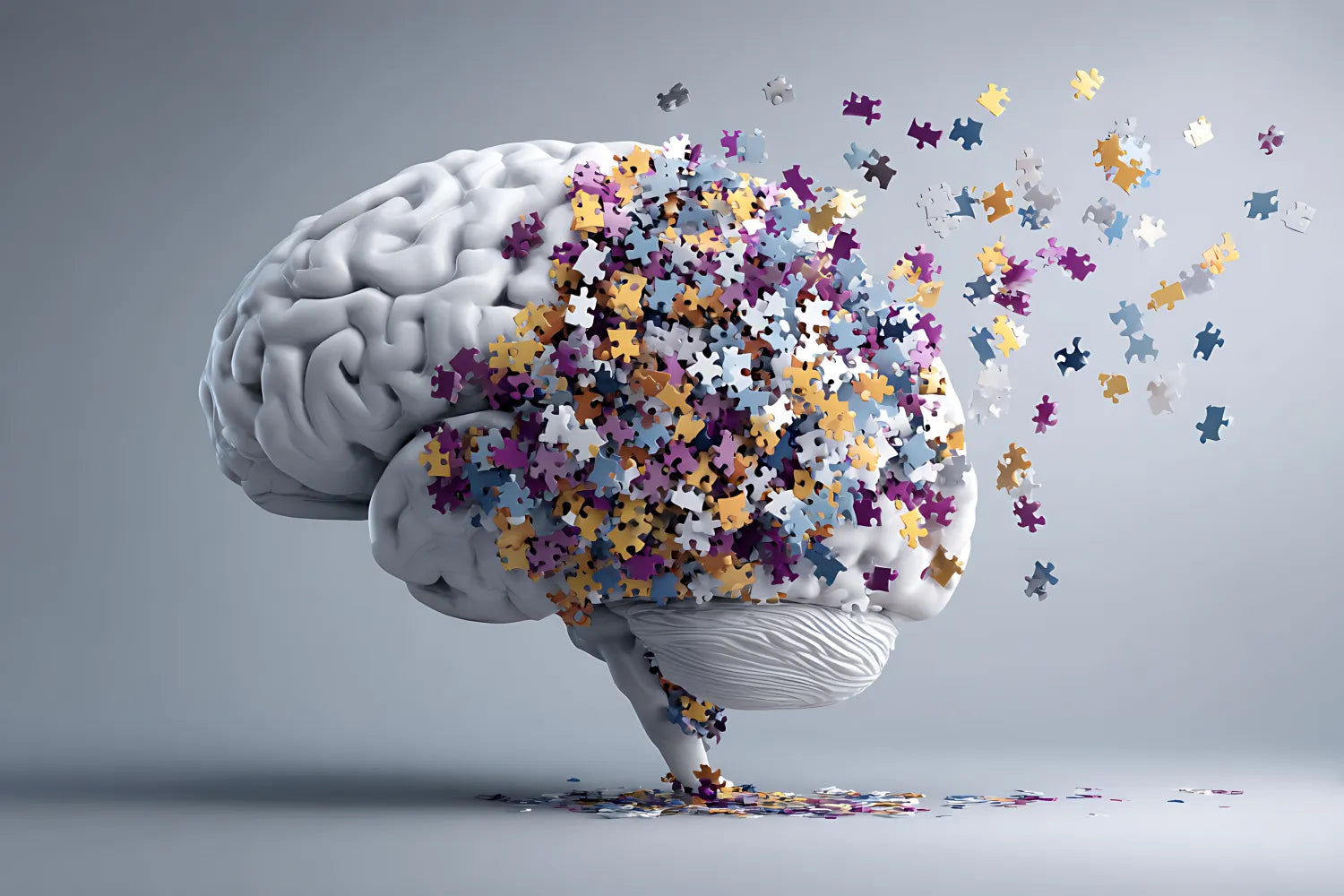
Dr. Eric Venn-Watson’s Highlights
-
The endocannabinoid system is home to receptors that help the body regulate many vital functions.
Cannabinoids are compounds that interact with these receptors. The more endogenous cannabinoids we have, the more well-regulated our bodies can be.
C15:0, the only ingredient in fatty15, is the precursor to the second ever discovered fully acting endogenous cannabinoid, PDC.
Ever wonder how your body doesn’t overheat on a hot day or how your heart rate automatically increases when you exercise and need more oxygen? We know sweat and respiration underlie these events, but what about the mechanics that trigger these phenomena on a molecular level?
The process of self-regulation is called homeostasis, and understanding how it works can help us understand how to stay healthier longer.
What Is Homeostasis?
Homeostasis, or self-regulation, is how your body regulates itself in response to environmental changes. It’s how your body elevates your body temperature when you are cold or causes you to sweat when you are hot. It’s how your pace quickens when you are in danger or slows to help you sleep.
A body that is in homeostasis is a body that is healthy, regulated, and well. When the body loses homeostasis, there are higher levels of disease, chronic pain, and inflammation.
What Is the Endocannabinoid System?
Your body regulates itself using a complex system of special receptors (called G protein-coupled receptors) located all over the brain and body. These receptors are integrated into every bodily system, and specialize into cannabinoid receptors as part of the endocannabinoid system.
The endocannabinoid system was discovered decades ago but wasn’t well understood until the early 1990s. We’ve known that the endocannabinoid system interacts with chemical compounds found in some plants and fungi, however, we didn’t know that the endocannabinoid system could modulate so many signaling pathways to play a huge role in the body’s homeostatic functions.
What Does the Endocannabinoid System Do?
The endocannabinoid system is involved with practically every homeostatic function of your body. The regulating effects of cannabinoids extend to:
- Regulation of appetite and hunger. An imbalanced system may lead to problems like obesity or lack of appetite.
- Discomfort like joint aches, tension, and strained muscles. This function is called antinociception (i.e. anti-pain-perception).
- Immunity. Cannabinoid signaling can greatly influence your immune response.
- Balanced mood. Endocannabinoid signaling controls the transmission of neurons that help elevate mood.
- Cognitive function and focus. Imbalances could make it harder to focus and be alert.
- Awake and sleep cycles. Imbalances here can lead to sleeplessness or the inability to fall asleep and stay asleep.
- Metabolism, including blood sugar homeostasis.
- Heart and blood vessel health.
Modulation of the ECS can help our bodies achieve a healthier, more balanced state of being, which can translate into less disease, feeling better in our day-to-day, and aging more healthfully. The ECS is also closely related to the gamma-aminobutyric acid (GABA) neurotransmitter system, especially where it acts in the hippocampus.
What Are Cannabinoid Receptors?
The receptors that give the endocannabinoid system its functionality are called cannabinoid receptors. There are two types: CB1 receptors and CB2 receptors.
CB1 Receptors
Cannabinoid receptor one or CB1 receptors are in the central nervous system (CNS), including the brain and spinal cord. These receptors are a type of G protein-coupled receptor (GPCR) responsible for homeostatic functions like respiration, body temperature, heart rate, and hunger. They are also responsible for mood, pain relief (through dopamine management), and cognition.
CB1 receptors can interact with mitogen-activated protein kinase (MAPK) pathways, calcium channels, and potassium ion channels.
They amplify communication between systems, regulate cardiac muscle contraction, and maintain the integrity of cell walls via electric voltage.
CB2 Receptors
Cannabinoid receptor two, or CB2 receptors, are found primarily in the peripheral nervous system. They were first discovered in macrophages in the spleen. They regulate immunity, gut health, and inflammatory responses, and also play a role in sensory processing by integrating portions of your vision, hearing, and touch.
These receptors need cannabinoid antagonists to interact and bind with them to activate certain signal transduction pathways.
What Are Cannabinoids?
Chemical compounds that bind to the endocannabinoid receptors are called cannabinoids. They are also referred to as receptor agonists because they bind to the receptor and stimulate a reaction.
The body makes a few of its own cannabinoids, called endogenous cannabinoids (endogenous meaning produced within the body). Other cannabinoids can be synthetic or found in plants and foods.
Plant-Based Phytocannabinoids
The cannabis plant produces two of the most commonly recognized cannabinoids: tetrahydrocannabinol (THC) and cannabidiol (CBD).
THC is a fully-acting cannabinoid because it can bind to both CB1 and CB2 receptors, where it induces a psychoactive effect.
Unfortunately, because THC is so well-known as being able to produce these mind-altering effects, many people misunderstand THC as representative of all cannabinoid effects, which is quite opposite from the truth. THC and its derivatives are the only kind of cannabinoid that produce these effects.
Other common cannabinoids such as CBD are more representative of the effects of phytocannabinoids in that they work to support balance and homeostasis in the body, with zero psychoactive effects, even at extremely high doses. In fact, CBD can actually counter the psychoactive effect of THC.
Synthetic Cannabinoids
Another class of cannabinoids is synthetic cannabinoids. These are similar in chemical structure to THC and can be taken recreationally or medically.
However, trials in pharmacology may one day help create a synthetic cannabinoid that interacts with the endocannabinoid system to positively affect bodily homeostasis in a way similar to CBD.
Endocannabinoids
Your body makes two of its own lipid endocannabinoid receptor ligands (a fancy way of saying it makes its own cannabinoids that can bind to our body’s cannabinoid receptors). They are 2-AG and anandamide, which are both derivatives of Arachidonic acid.
- 2-arachidonoyl glycerol, or 2-AG can bind to both CB1 and CB2 receptors and is, therefore, considered “fully acting.” The body needs an enzyme called fatty acid amide hydrolase (FAAH) to synthesize this endocannabinoid. 2-AG helps with balancing the immune system and interacts with immune cells.
- N-Arachidonoylethanolamine, aka anandamide or AEA. Synthesis of this endocannabinoid requires arachidic acid, a fatty acid that acts as a precursor to anandamide. Higher concentrations of anandamide are associated with better cognitive function, memory function, brain health, and a more balanced mood. This endocannabinoid also interacts with TRPV1 receptors, which monitor and regulate body temperature.
Both 2-AG and anandamide are neurotransmitter agonists that bind to receptors and either inhibit or increase response from the body. Inhibition happens due to negative feedback loops, which cause the body to stop doing something it is doing. An increase in that activity results from a positive feedback loop.
We’ve only known about one fully-acting endocannabinoid until now.
A New Fully-Acting Endocannabinoid
If an endocannabinoid is fully acting, it can bind to both CB1 and CB2 receptors and produce a wider range of therapeutic benefits. Neuroscience researchers have discovered the second-ever, fully-acting endocannabinoid known as pentadecanoylcarnitine (PDC).
PDC is made by the body using an essential fatty acid known as pentadecanoic acid (C15:0 for short) and carnitine. Unfortunately, many of us don’t have high circulating levels of C15:0. Thankfully, there’s a solution.
Elevate your cells. Elevate your self.
Buy NowFatty15: A C15:0 Solution
While studying dolphins, veterinary epidemiologist Dr. Stephanie Venn-Watson discovered that dolphins with higher levels of C15:0 led healthier, longer lives.
Dr. Venn-Watson’s team furthered their research to see how this molecule could help humans and published their findings in Nature’s Scientific Reports in 2020.
We now know that besides the numerous long-term health benefits of C15:0, it can also help your body make more PDC, resulting in better homeostasis and a healthier, happier you.*
Fatty15 is a breakthrough supplement born from scientific discovery, containing one pure ingredient, FA15™. This pure, vegan-friendly, sustainably-produced, award-winning version of C15:0 can help you restore your circulating levels of C15:0, resulting in better health, more balanced homeostasis, and better long-term health and wellness.*
Looking to learn more? Click here to learn all you need to know about C15:0, or click here to let the fatty15 customer base speak for us.
Sources:
Synthetic Cannabinoids | AACC.org

Eric Venn-Watson M.D.
CEO, Co-Founder
Senior Scientist, Co-Founder
Eric is a physician, U.S. Navy veteran, and Co-founder and COO of Seraphina Therapeutics. Eric served over 25 years as a Navy and Marine Corps physician, working with the special forces community to improve their health and fitness. Seraphina Therapeutics is a health and wellness company dedicated to advancing global health through the discovery of essential fatty acids and micronutrient therapeutics.
You May Also Like...
When Does Cognitive Decline Start?
Almost everyone will experience some cognitive decline in their lifetime. Learn which decade is most closely associated with thinking trouble.
List of Cognitive Changes in the Elderly as They Age
Are you wondering where your keys are? Not being able to find them could be due to cognitive changes in your brain as you age.


